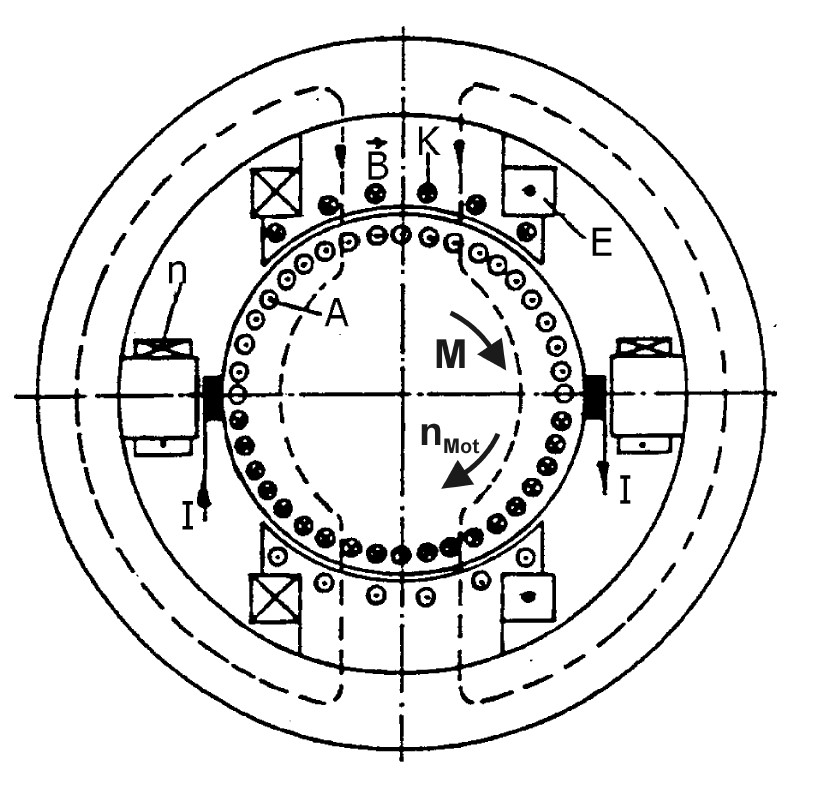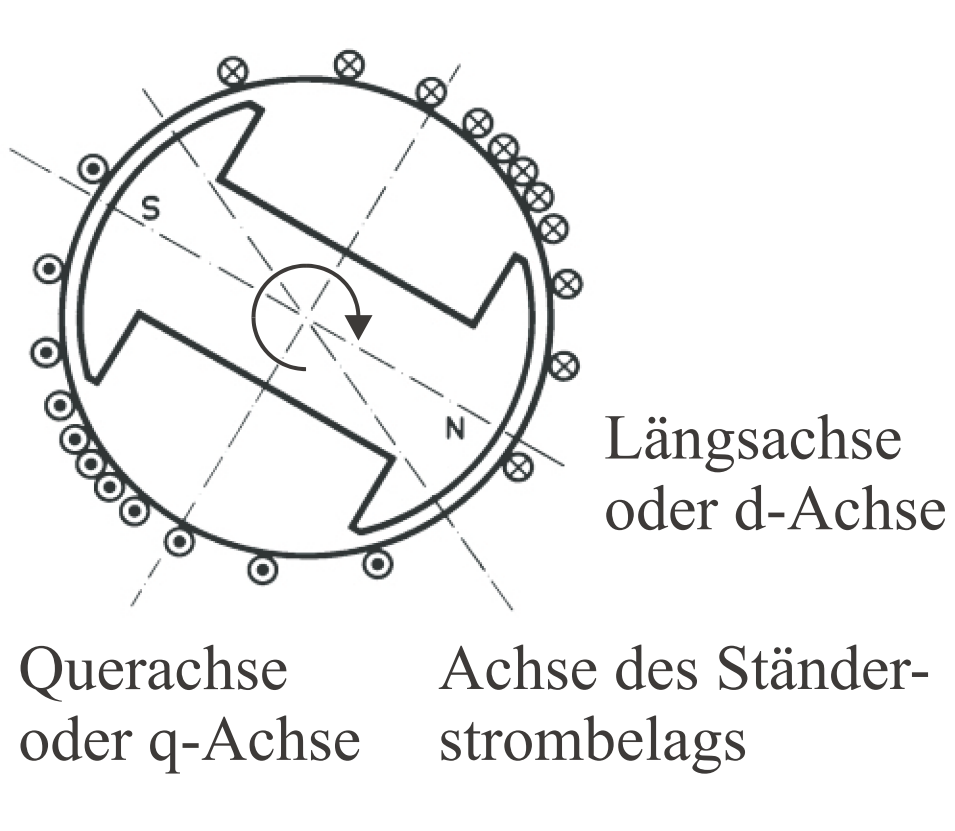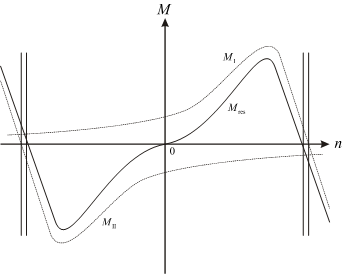Electrical Machines Laboratory Experiments
Three-phase induction motor
The three-phase induction motor is investigated by an introductory experiment. Different measuring methods and instruments are explained which are needed to investigate electrical machines and to make tests at different measuring points.
Another topic is the performance of the three-phase induction motor.
Exercises are
- no-load test,
- load test,
- start-up.
The focus is laid on the evaluation of the data measured. The current locus diagram is determined by measurements and the efficiency by summation of losses.
DC motors
In this experiment, the design and operating principle of DC motors is discussed. A main part of this is to analyze the common features and differences between DC motors with series and shunt connections. During the practical part of the experiment both machine types are investigated, especially with regards to speed setting options and the resulting loading torque characteristics. Further measurements include:
- no load characteristic,
- different speed-torque-characteristics and
- efficiency calculation by summation of losses.
Salient-pole synchronous machine
This experiment deals with the performance of salient-pole synchronous machines.
Exercises are:
- no-load and short-circuit saturation test,
- synchronization with the mains,
- reluctance circuit,
- two-phase sustained short circuit,
- three-phase sudden short circuit.
Students learn how to determine d- and q-axis reactances as well as negative- and zero-sequence reactances in case of an unbalance. Another focus is laid on the performance in case of a sudden short circuit, giving information on parameters influencing the behaviour in case of a fault.
Universal motor
In this experiment, the perfomance of a universal motor is investigated depending on supply and load for the operating modes
- AC operation wih constant voltage and constant frequency,
- AC operation with variable supply voltage,
- DC operation,
- operation with phase-angle control.
In each case, the speeds and other relevant quantities are measured in dependence of the load torque. Then the characteristic curves are plotted, and analytical relations are derived.
Induction motor with stator and rotor unbalance
Synchronous motor with cylindrical rotor
The experiment focuses on the performance of a synchronous motor with cylindrical rotor that is coupled with a shunt-wound DC machine, considering
- performance at no load and short circuit,
- synchronization with the mains,
- determination of current locus diagram,
- deceleration behaviour in case of a short circuit.
Single-phase induction motor
The experiment deals with the performance of a single-phase induction motor. For this purpose, a three-phase induction motor is run on a single-phase supply. The machine's performance is investigated as a
- three-phase motor,
- single-phase motor with Steinmetz connection,
- single-phase motor with 2/3 - 1/3 connection.
Goal of the experiment is to compare the machine behaviour on a two-phase and three-phase supply.



























